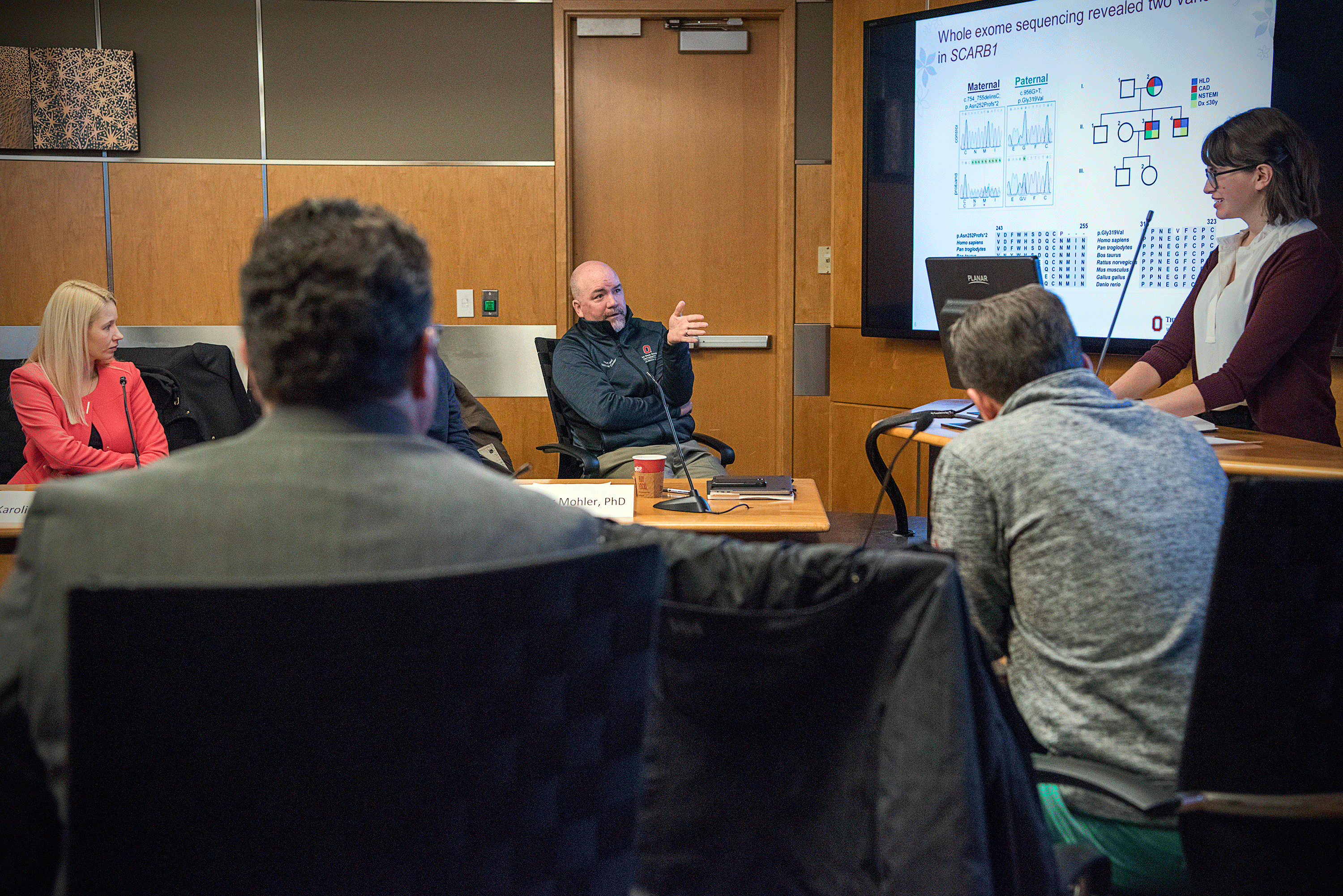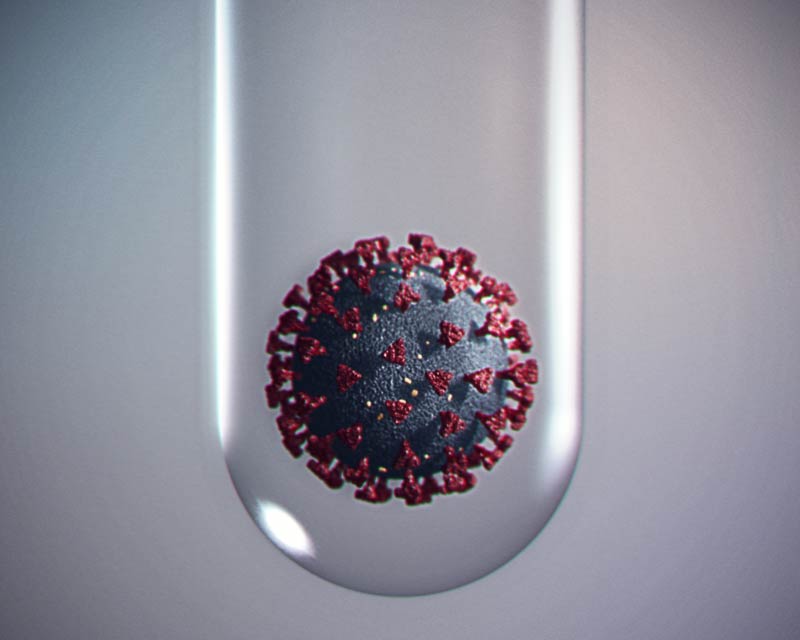Members of the JB Project Meeting to Discuss Current Cases
Clinicians, Scientists Collaborate to Tackle Mysteries of Cardiovascular Disease
A grassroots effort by clinicians and basic scientists to unravel mysteries of rare heart conditions is yielding promising results at Ohio State. Since 2017, the JB Project, funded by a generous donor family, has focused on deciphering the root cause of highly unusual cases involving coronary artery disease, arrhythmias and heart failure.
Richard Gumina, MD, PhD, an active member of the project, is associate division director for research with Ohio State’s Division of Cardiovascular Medicine and an interventional cardiologist with extensive background in physiology and molecular biology. He explains that the monthly meetings provide an infrastructure “to discuss rare presentations of common heart disease. We want to understand at a molecular level the underlying causes of disease. Our goal is to potentially reveal new targets for therapy and ultimately develop new therapies that would benefit all of our patients.”
Dr. Gumina says this structured collaboration is unique and highly rewarding. “We have brought together pure clinicians and pure basic scientists to discuss these complex cases – and how we might take different approaches to understanding the cause or possible novel treatments for these patients. It’s fun to have everyone around the table to think outside the box,” he says with enthusiasm.
Pursuing new studies is a fluid process. The JB project has IRB approval to conduct extended genetic analyses and contact family members for all new protocols.
Case Study: Gene Variant Identified in Young Man with Severe Coronary Artery Disease
One notable study initiated by the JB project involves a young man who had a heart attack in his late 20s and who continued to have severe coronary artery disease (CAD) and hypercholesterolemia despite no other risk factors. “His disease isn’t well managed with medication, so he has many restrictions and he’s not living life as he wants to,” says Sara Koenig, PhD, postdoctoral fellow who has been researching the genetic and molecular mechanisms of this patient’s disease.
Wanting to investigate the root cause of the young man’s disease, a CAD work group took on the project. They started with whole exome sequencing of blood samples from the young man and his family to look for genetic variants.
“We collected DNA samples and sifted through millions of variants,” Dr. Koenig says. “We made a system to sort through data and find a single variant causing disease. We got lucky with this patient and were able to figure out the origin of his disease.” A genetic counselor met with the patient and family to discuss implications of the findings. Further investigation helped the work group identify a drug not typically used for CAD and hypercholesterolemia. The team has consulted with the treating physician about potential off-label drug use that will target the young man’s specific form of hypercholesterolemia, with the hope of improving his quality of life. The study is awaiting acceptance for publication.
Broadening the Applications: From Personalized to Population Management
Dr. Koenig explains that work with the JB project has two goals: “We want to improve patient care on an individual level. Secondly, we want to take the knowledge we’ve learned and apply it to others with the same disease.” The team has been able to do additional studies on sample stem cells from the young man with severe CAD, and they’ve been able to model the genetic variant for further study in mice. Members of the JB Project would like to pursue retrospective and prospective trials to investigate whether the young man’s gene variant may be present in others with severe coronary artery disease.
Dr. Gumina notes that Ohio State has a number of studies focused on individual families’ genetics, which may shed light on disease across a broader population. Ohio State is working to build a large biorepository of DNA, RNA and biological samples from participating cardiovascular patients at Ohio State. The JB Biorepository will create a broad infrastructure for studying complex cardiovascular disease.
He says, “As we identify genetic variants that might be pathogenic and influence the severity of disease, we want to reproduce the effects in laboratory-based studies. Then, important for clinical translation, we want to determine if we can target the affected proteins with new drugs, either to modify gene expression or alter protein activity, so we can decrease coronary artery disease, propensity for developing arrhythmias or progression to heart failure.”
Dr. Koenig says she feels privileged to work on the JB Project: “Working with this group, I get to see that the work I’m doing is providing hope to patients and altering the way the physician is treating the patient and family. As our group continues to work together, I’m going to be a better scientist. And physicians will have a better understanding of the research process. This is an incredible opportunity.”
Read more featured stories about The Ohio State University Heart and Vascular Center.




